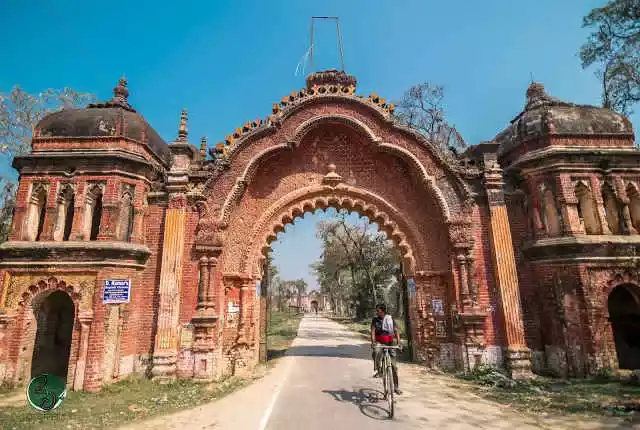Sitamarhi District: A Comprehensive Overview
Introduction
Sitamarhi, a vibrant district in the northern part of Bihar, India, holds immense historical, cultural, and geographical significance. Known for its rich heritage and diverse traditions, Sitamarhi is a prominent location in the Mithila region. This article delves into the various aspects of Sitamarhi, providing an in-depth understanding of its demography, culture, geography, cuisines, history, literary contributions, and administrative framework.
Geography of Sitamarhi
Sitamarhi is strategically situated at the foothills of the Himalayas, bordering Nepal. The district spans an area of 2,294 square kilometers and lies between latitudes 26.6°N and 27.1°N and longitudes 85.3°E and 86.1°E. The Bagmati River, along with its tributaries, enriches the land, making it fertile and suitable for agriculture.
Climate
The district experiences a subtropical climate, characterized by hot summers, a monsoon season with substantial rainfall, and cool winters. The average temperature ranges from 5°C in winters to 40°C in summers. The monsoon, occurring between June and September, significantly influences agricultural activities.
Demography
According to the 2011 Census, Sitamarhi has a population of approximately 3.4 million, with a population density of 1,481 persons per square kilometer. The district boasts a high literacy rate of around 53%, with significant strides being made in education, particularly among women.
Ethnic Composition
Sitamarhi's population is predominantly composed of various Hindu communities, with a significant presence of Muslims. The district is known for its communal harmony and cultural diversity.
Historical Significance
Sitamarhi holds a revered place in Indian mythology and history. It is believed to be the birthplace of Sita, the consort of Lord Rama from the epic Ramayana. The town of Sitamarhi itself is named after her. Historical records and legends highlight the district's importance during ancient times, including its connections to the Videha Kingdom and the Mithila region.
Archaeological Sites
Several archaeological sites and temples in Sitamarhi attract historians and tourists alike. The Janaki Temple in Sitamarhi and the Panth Pakar tree are significant landmarks associated with Sita's life.
Cultural Heritage
The cultural fabric of Sitamarhi is woven with vibrant festivals, traditional music, and dance forms. The region celebrates a plethora of festivals with great fervor, reflecting its rich cultural heritage.
Festivals
- Chhath Puja: A major festival dedicated to the Sun God, marked by rituals performed on the banks of rivers.
- Durga Puja: Celebrated with grandeur, this festival involves the worship of Goddess Durga.
- Ram Navami: Commemorating the birth of Lord Rama, it is celebrated with processions and devotional music.
Music and Dance
Folk music and dance are integral to the cultural identity of Sitamarhi. Traditional Maithili songs, performed during weddings and festivals, and folk dances like Jat-Jatin and Jhijhiya are popular.
Cuisine of Sitamarhi
The cuisine of Sitamarhi is a delightful blend of flavors, predominantly featuring vegetarian dishes. The culinary traditions reflect the agricultural produce and cultural influences of the region.
Popular Dishes
- Litti Chokha: A traditional dish made of wheat flour dough balls stuffed with roasted gram flour, served with mashed vegetables.
- Dal Pitha: Rice flour dumplings filled with spiced lentils.
- Makhanah Kheer: A dessert made from fox nuts cooked in milk and sugar.
Literary Contributions
Sitamarhi has produced several notable poets and writers who have contributed to the literary landscape of India. The Maithili language, a prominent language in the region, has a rich literary tradition.
Prominent Figures
- Vidyapati: A celebrated poet of the Maithili language, known for his devotional and love poetry.
- Nagarjun: A renowned poet and novelist who wrote in Maithili and Hindi, capturing the socio-political issues of his time.
Administration and Governance
Sitamarhi district is part of the Tirhut Division in Bihar. The district administration is headed by a District Magistrate (DM), responsible for maintaining law and order and overseeing developmental activities.
Administrative Divisions
The district is divided into three subdivisions: Sitamarhi Sadar, Pupri, and Belsand. These subdivisions are further divided into blocks and panchayats, ensuring efficient governance and delivery of public services.
Infrastructure
Sitamarhi has witnessed significant infrastructural development in recent years. The district is well-connected by road and rail, with plans underway to enhance connectivity further. Healthcare and educational facilities have also seen considerable improvements.
Conclusion
Sitamarhi district, with its rich historical background, cultural diversity, and strategic geographical location, stands as a testament to Bihar's heritage. Its vibrant festivals, delectable cuisine, and significant literary contributions make it a unique and fascinating destination. As the district continues to develop and modernize, it retains its traditional charm, offering a blend of the old and new for residents and visitors alike.
Suggested Diagram
This diagram provides a visual summary of Sitamarhi's geographical features, cultural elements, historical significance, and administrative structure, making it easier to understand the district's comprehensive profile.
